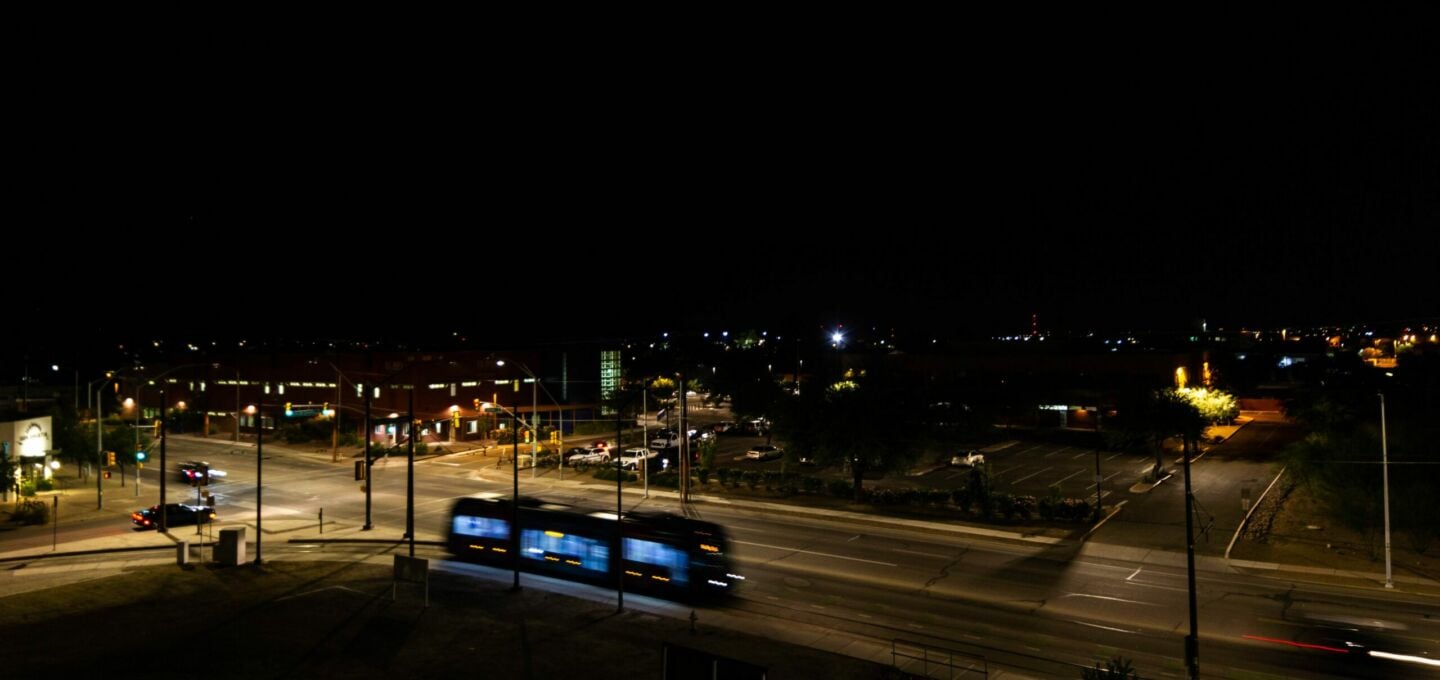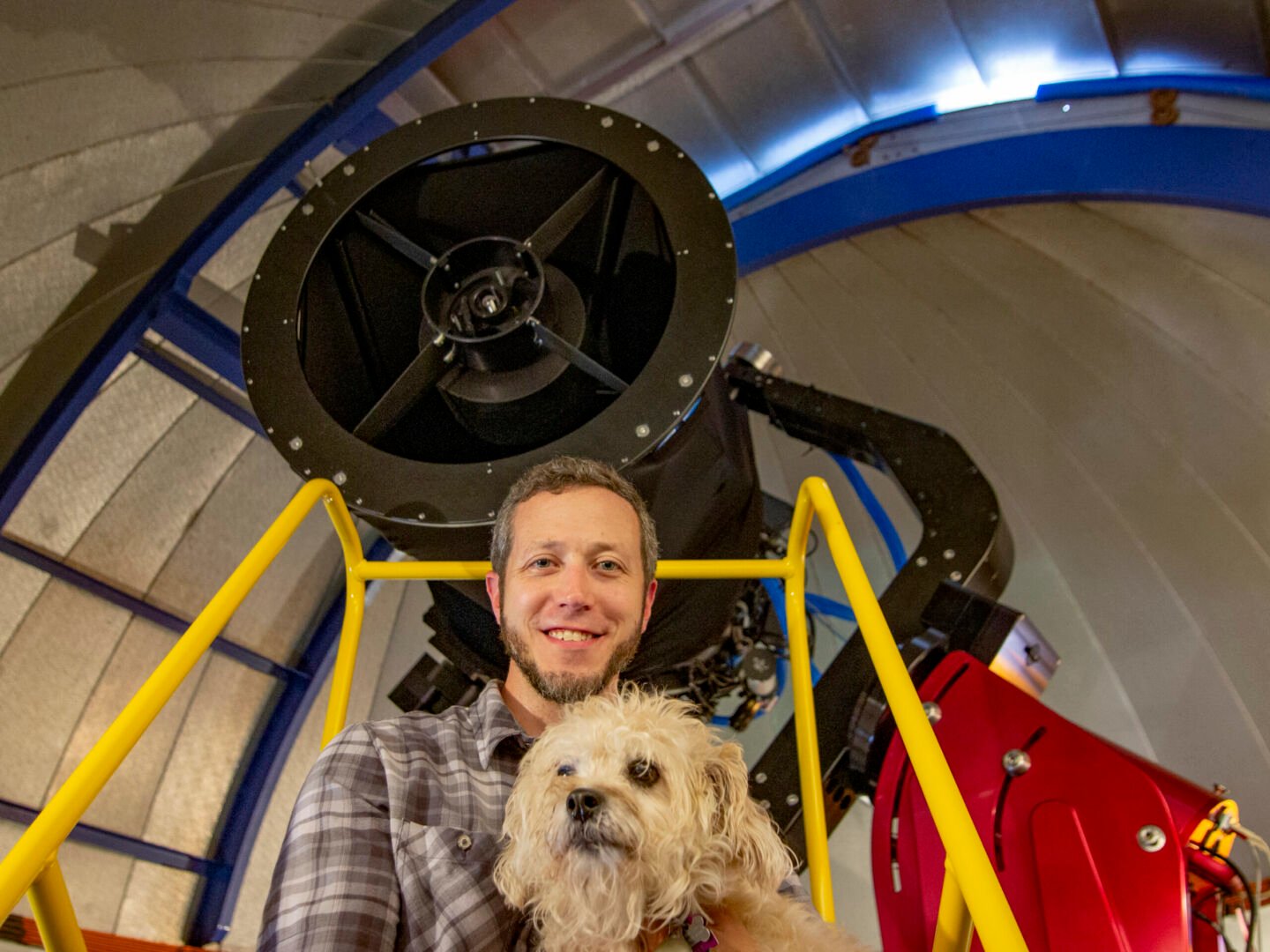
How a small town in the U.S. came to endorse the Five Principles for Responsible Outdoor Lighting
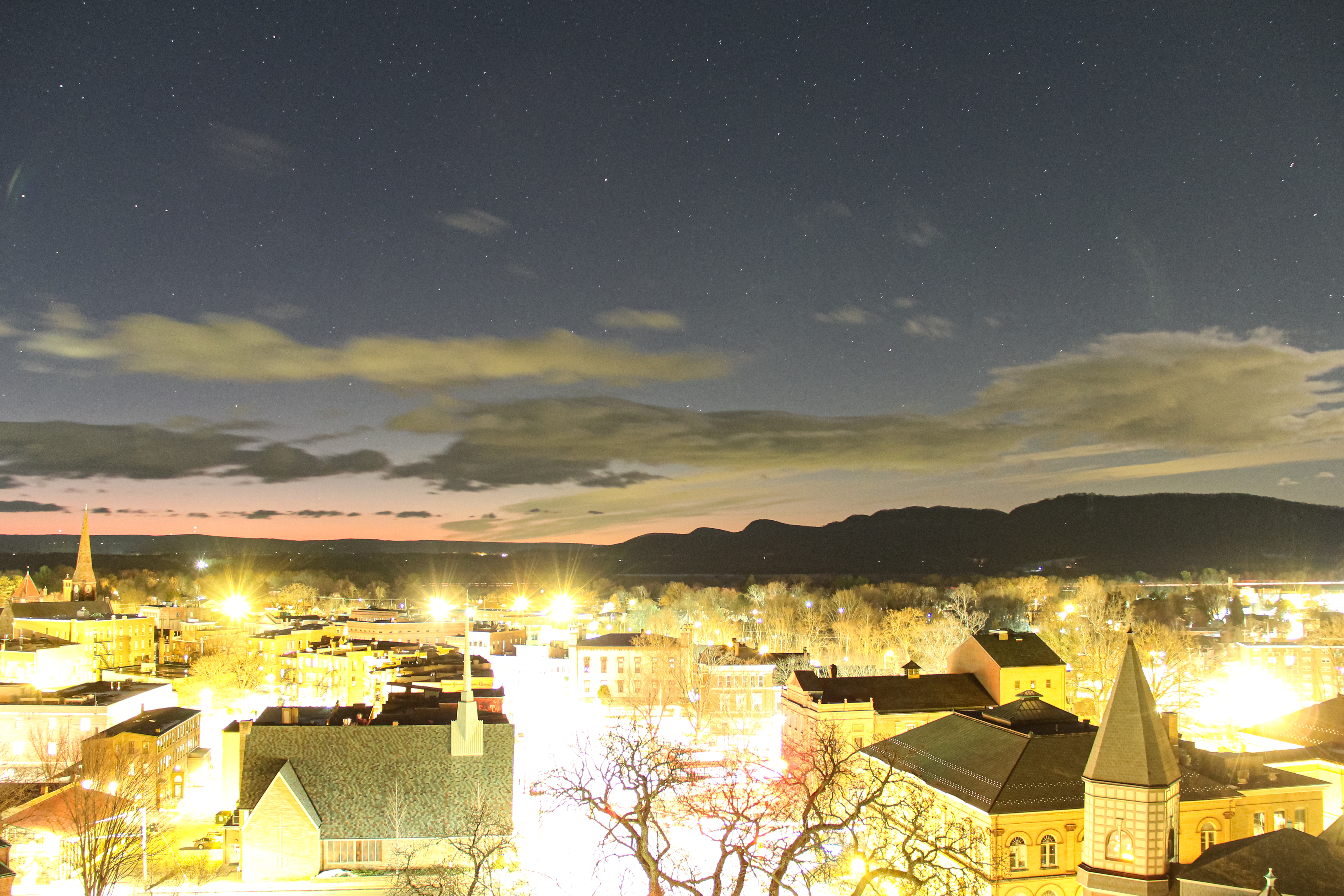
Like most of you, I’ve struggled for years to find a way to get my city — the small town of Northampton, Massachusetts, U.S., population 30,000 — to make better choices about outdoor lighting. The challenge became especially acute in 2016 when city leaders ignored the pleas of DarkSky Advocates and hundreds of citizens and made the choice to switch over the town’s streetlights to new LEDs.
It could have been worse — at least they chose DarkSky Approved fixtures. But they missed a golden opportunity to use warmer colors, install dimmers to turn the lights down or off late at night, minimize glare, and reduce the overall light output. The result: all over town, the new lights give you a painful poke in the eye, and the night sky has a constant grey twilight pall that hides the Milky Way and thousands of stars.
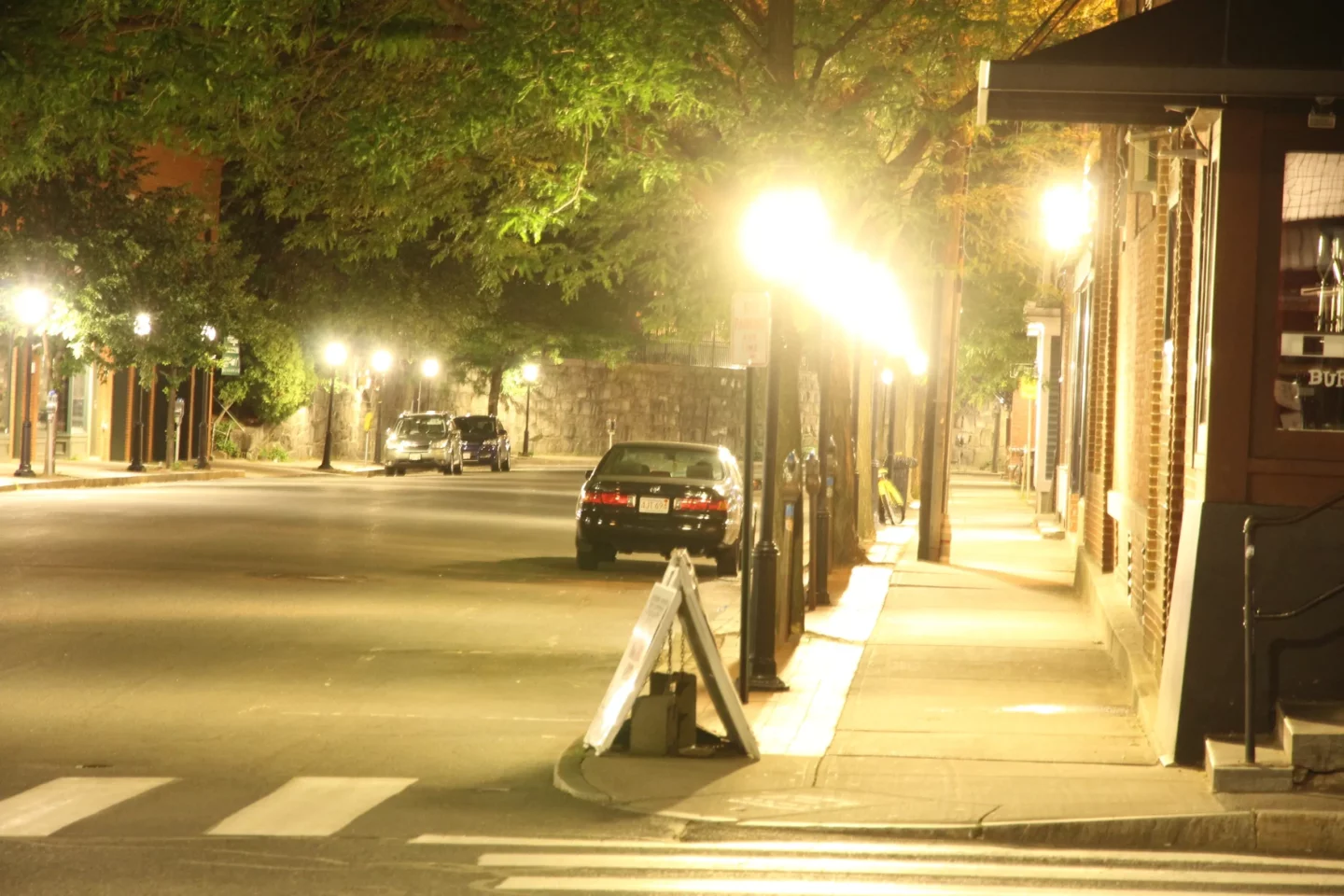
We “defenders of the night” licked our wounds for a few months, then got back to work. We founded a new city-wide organization, Northampton City Lights, with a Steering Committee of 10 people and a mailing list of nearly 100. We began monthly meetings to strategize. We networked with sympathetic local environmental and public health organizations. We set up a table downtown, and in the public library, we hosted a book club reading of Paul Bogard’s The End of Night, we wrote letters to the editor of the local newspaper.
And in 2019, we sent a questionnaire to all 12 candidates running for City Council, asking them about their views on light pollution and what they would do to address it if elected. Then we published their answers on our website. That process let us meet one-on-one with most of the eventual City Council members, educate them about light pollution, and get them on record making promises to fix it.
Still, we had trouble finding traction in local politics. We were turned down repeatedly for meetings with the mayor. We lobbied to fix the new too-blue, too-bright lights in the main downtown park, to no avail. Northampton already had a 15-year-old outdoor lighting ordinance, but the city had a poor record of enforcing it, especially on its own municipal lighting projects. We had burned a few bridges in all our efforts; we needed a new approach and a fresh start.
Then in 2020, DarkSky Interntional and the Illuminating Engineering Society (IES) unveiled their new joint Five Principles for Responsible Outdoor Lighting Practices. Because the concepts in the Five Principles are so basic, reasonable, and unassailable, we thought perhaps they would provide a way around the impasses we had been struggling with. Could we get the City of Northampton to endorse the Five Principles somehow?
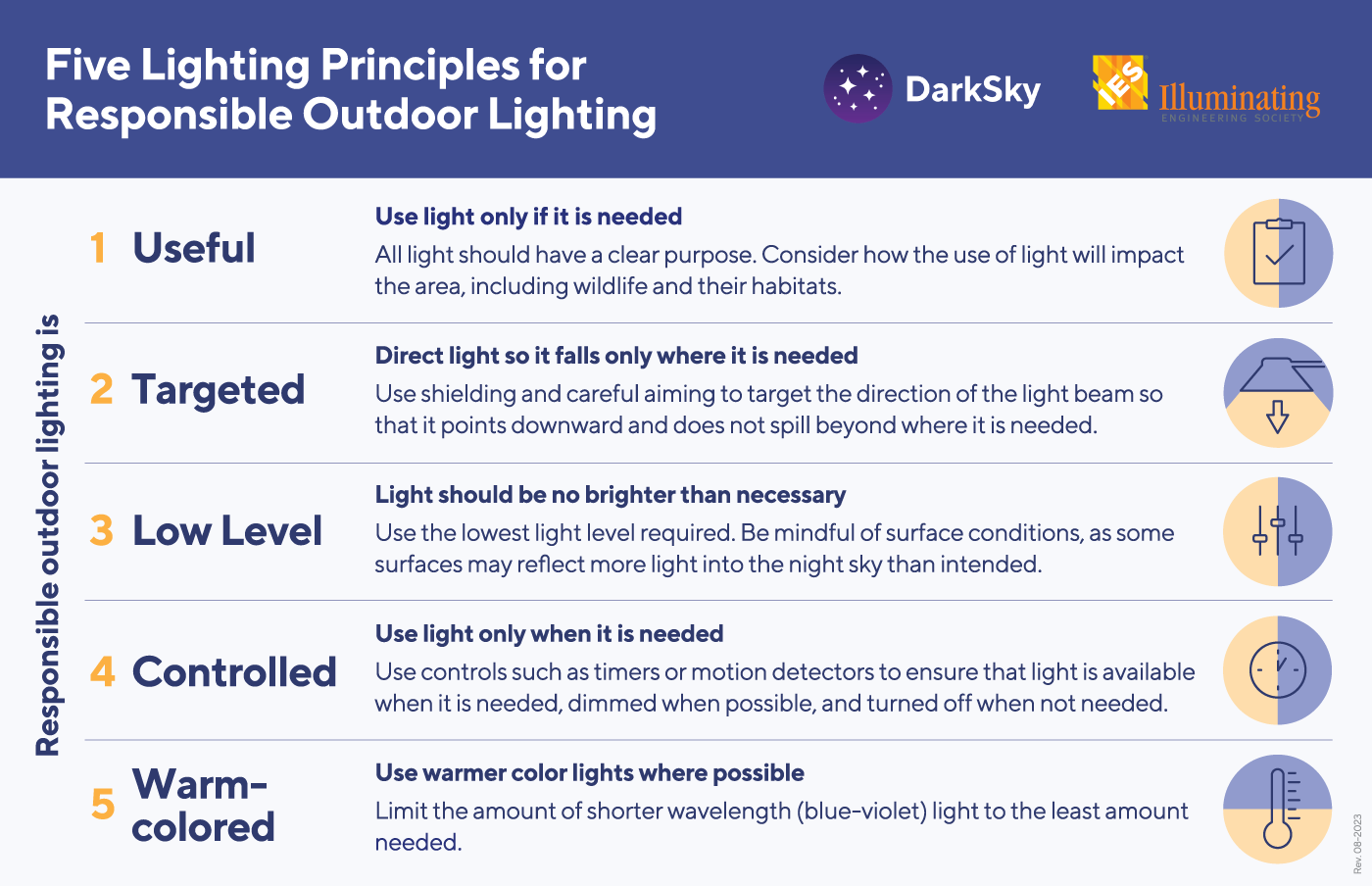
We knew that the main decision-making body for city lighting projects was the Northampton Energy and Sustainability Commission (NESC), which included staff representatives of Central Services, the Department of Public Works, and the Office of Planning and Sustainability, in addition to citizen members. We had a few allies on NESC, including two city councilor members — both of whom had answered our questionnaire with very positive and forward-thinking responses. So in January 2021, at our request, those city councilors put the Five Principles on the agenda of the NESC monthly meeting, held remotely over Zoom. Several of us from Northampton City Lights attended the meeting. We gave a brief illustrated presentation about light pollution and the status of outdoor lighting in Northampton and then introduced the Five Principles.
There was some lively discussion, during which we were able to answer a few questions about light pollution, DarkSky, and Northampton City Lights’ work. Then it was time for the vote: it was unanimous in favor of endorsing the Five Principles!
The whole experience was a refreshing break from the previous years of opposition. It gave us a new sense of hope that we are finally making progress in getting the issue of light pollution elevated in city politics, that numerous decision-makers are on our side, that we can all feel good about something we’ve worked on together, and that the underlying values central to the dark-sky movement are in fact shared by the city.
The proof will be in the pudding: How will the city actually apply the Five Principles? They’re pretty subjective; who will be in charge of consulting them and assessing how well municipal lighting projects adhere to them? How will any disagreements be resolved? We’ll soon know more: there are several significant outdoor lighting projects now being implemented in Northampton. Northampton City Lights has been in close touch with the city about them, and we’re citing the Five Principles for Responsible Outdoor Lighting Practices at every opportunity. We consider them to be the starting point for city lighting decisions from now on, and we aim to convince the city to do the same.
To summarize what worked for us:
- Get organized, find allies, use multiple approaches and media to get your dark-skies message out there.
- Meet one-on-one with city decision-makers, especially candidates for elected office.
- Issue a questionnaire on light pollution to candidates for elected office, and publish the results.
- Once you’ve established some relationships with city officials, find out which part of the city is making decisions about lighting and introduce the Five Principles there. Or, if leadership is sympathetic, start at the top and try to get the whole city to endorse them.
Here’s hoping a future blog post has good news of success and protection for dark skies in Northampton, Massachusetts — or in your city or town!
About the author
James Lowenthal is the Mary Elizabeth Moses Professor of Astronomy at Smith College in Northampton, Massachusetts, U.S.. He received his BS in Physics and Astronomy from Yale and his PhD in Astronomy from the University of Arizona. He studies the formation and evolution of galaxies, especially actively star-forming galaxies. He leads the local advocacy group Northampton City Lights; is the President of DarkSky Massachusetts; chairs the Light Pollution Sub-Committee of the American Astronomical Society Committee on Light Pollution, Radio Interference, and Space Debris; and is Vice-President of the International Astronomical Union’s Commission on Site Protection (i.e., light pollution). Of all of those, the local case — the small town of Northampton, MA — is arguably the most challenging!

















